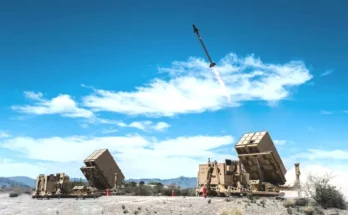
Loitering munition drones – also referred to as ‘kamikaze’ drones – have made their mark in the war in Ukraine, with both combatants heavily employing the UAVs to strike the other’s positions along the frontlines and key infrastructure behind the lines. Though with small payloads, loitering munition drones provide precision strike potential at a cost low enough to enable mass procurement and thus, unsurprisingly, other militaries around the world are taking note and looking to adopt the capability.
One country looking to introduce these types of UAVs into service is Georgia, which fought and lost a war with Russia in 2008 that laid bare the power disparity between the two. While Russia had its own challenges in that conflict, it destroyed a significant amount of Georgian military hardware, particularly aircraft and air-defense weapons. Georgia is no mood to rekindle that war, but nevertheless is wary of Russian intentions, especially as Moscow continues to back two separatists republics on Georgian soil. Earlier in October, the leader of one of those republics announced that it would soon play host to a Russian naval base, a move Georgia’s Foreign Ministry slammed as a “flagrant violation of Georgia’s sovereignty and territorial integrity.”
Georgian defense planners see loitering munition drones as offering a way to improve deterrence against Russia, using Ukraine as a model. Along with its growing arsenal of missiles, Ukraine has been using UAVs (and unmanned maritime drones) to hit Russian air and naval bases in occupied Crimea, eastern Ukraine, and Russia proper, forcing Russia to deploy additional military resources, namely air-defense equipment, away from the front while bringing the war home to the Russian leadership.
On May 18, 2022, Georgia’s STC Delta signed an agreement with Poland’s WB Group to localize production of two types of drones, the FLYEYE reconnaissance drone and Warmate, a loitering munition UAV. In an update to parliament this past week on October 17, Georgian Defense Minister Juansher Burchuladze said that Delta-WB LLC should begin producing the first drones by the end of this year. Georgia’s Armed Forces are to be the first customer.
Warmate delivers a high-explosive payload to ranges of 30 kilometers, according to a product sheet from WB Group. It carries a flight time of 70 minutes, making it a “good alternative for anti-tank guided missiles” that might otherwise be used for similar purposes. Warmate can be manportable or equipped to ground vehicles or helicopters.
Drawing on the lessons from the 2008 war, Georgia’s military announced in 2017 that its Su-25 fleet, with about a dozen aircraft remaining, would be decommissioned, probably for resale, and would be replaced with drones to carry out the same function. Su-25s were once manufactured in Georgia, but this is no longer possible without industrial coordination with Russia – which also makes acquiring spare parts to support the existing fleet difficult. The rationale for the decision to cut the Su-25s was solid, as it is expensive to continue to maintain aircraft that Russia would shoot down within hours of warfare breaking out anyway, but the Ministry of Defense ultimately was not ready to take that step and retire the jets at that point.
Combat UAVs have only recently started becoming widely-available in international markets, so, faced with few procurement options, the Ministry of Defense shelved the Su-25 retirement plans, announcing a modernization effort in 2021 that remains ongoing. The seventh modernized Su-25 returned to duty in August. In time, however, loitering munition drones like the Warmate may become the replacement for the Su-25s.
Military markets analyst, covering Eurasia, Middle East, and Africa.




